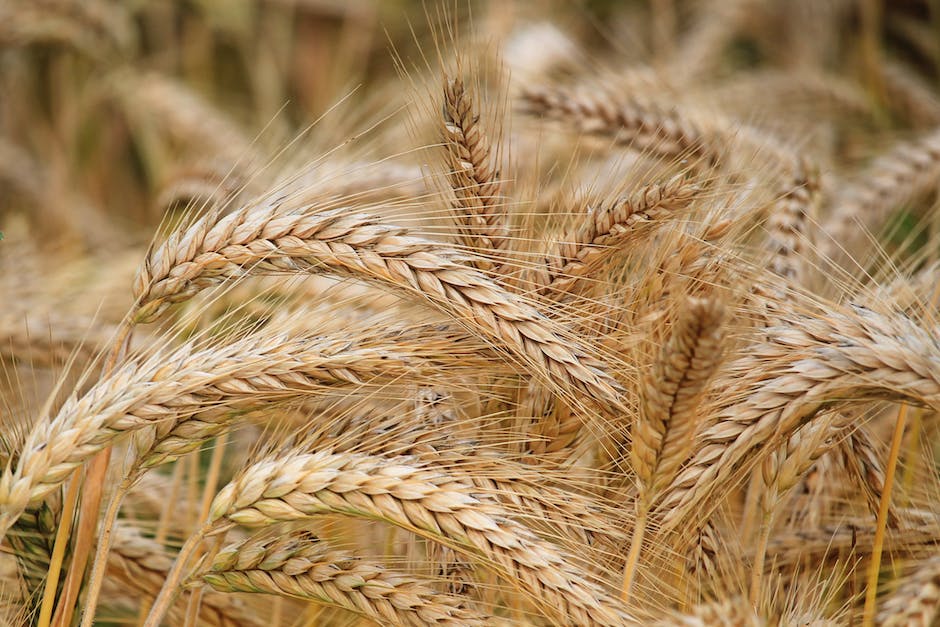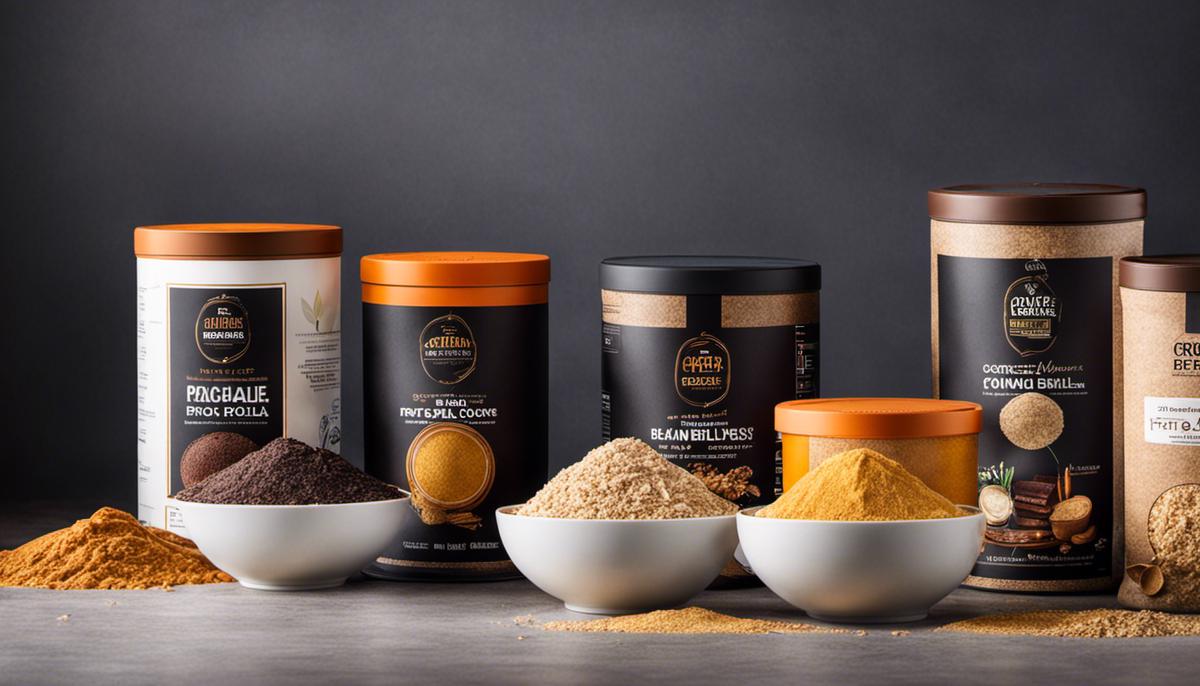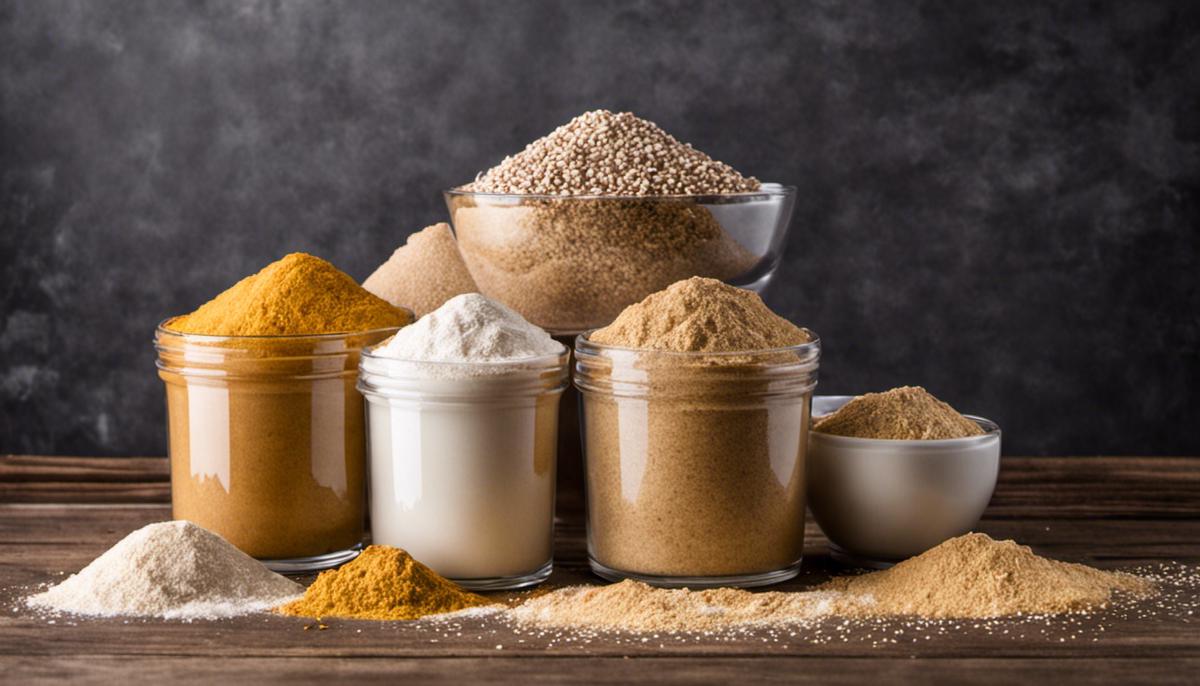Protein is an often-overlooked yet key component in flours used for cooking and baking, shaping the texture, structure, and nutrition of the final product. If, like so many others, you’re blissfully unaware of the influence your choice of flour can have on your culinary creations, then it’s high time you delve into the fascinating world of protein-enriched flours. We’ll explore what lies beneath the labels of the overflowing flour aisle, deciphering the significance of protein content and key implications for our diet. From the ubiquitous all-purpose flour to specialized oat and almond flours, we’ll unfold the wealth of choices available to health-conscious consumers and passionate bakers alike. So step into our virtual pantry as we embark on a journey to explore the integral role of protein in our flours and our food.
Understanding the Relationship Between Flour and Protein
Understanding Protein in Flour
Protein is a crucial component present in flour which primarily determines the structural framework of the final baked product, offering it strength and elasticity. Gluten, a protein composite, is the substance that owes to the stretchiness of the dough. While kneading, the water content in the dough causes the proteins, gliadin, and glutenin to link up and form gluten. The levels of these proteins, and consequently the gluten content in different types of flour, impact the outcome of the baked goods.
Protein Content in Flour
Flour’s protein content can significantly vary between different types of grains and brands. The protein level in flour derives largely from the type of wheat used. The highest protein flours are usually made from hard wheat, while lower protein flours typically come from soft wheat.
Hard wheat flours or bread flours have a high protein content, typically ranging from 12 to 14 percent. Their high gluten potential makes them ideal for bread, pizza, and other baked goods requiring a strong structure.
All-purpose flour or plain flour, made from a blend of hard and soft wheat, typically has a moderate protein content ranging between 9 and 12 percent. It is a versatile choice suitable for a broad spectrum of baking and cooking needs.
Pastry flour and cake flour, made from soft wheat, have lower protein content ranging from 7 to 9 percent and 6 to 8 percent, respectively. These flours are excellent for producing softer and tender baked treats such as cakes, cookies, and pastry.
High-Protein Flours
Among all flours, vital wheat gluten has the highest protein content, an impressive 70-80 percent. However, it is not used alone due to its intense binding property. Generally, it’s added to other flours to increase the protein content and improve the gluten structure.
Whole wheat flour, derived from entire wheat kernel (bran, germ, and endosperm), has a protein content between 11 and 15 percent. Along with providing a firmer structure, it also boasts a higher fiber content and increased nutritional benefits compared to white flours.
Triticale flour, a hybrid of wheat and rye, boasts of protein content ranging between 13 and 16 percent – even higher than whole wheat flour. Besides, it’s rich in numerous essential minerals and vitamins.
The Significance of High-Protein Flours
Flours that have a high protein content tend to be dense in nutrients, making them a beneficial addition to our diet. By incorporating more of these protein-rich flours into our meals, we can enhance muscle and tissue repair, balance our hormones, and fortify the immune system.
Interestingly, not all proteins found in flour are ‘complete’, which means they may lack some essential amino acids that our bodies need. However, this deficit can be effectively counteracted by mixing these flours with other foods that are rich in protein like legumes, seeds, nuts, or meats, ensuring we obtain a comprehensive range of nutrients.

Different Types of Flour and Their Protein Content
The Versatility of All-Purpose Flour
All-purpose flour, also known as the baker’s go-to, presents with protein content that is normally in the range of 10-12%. This is due to the combination of both hard and soft wheat from which it is produced. As a result of this blend, all-purpose flour achieves a versatile texture, making it a reliable choice for various baking endeavours.
Bread Flour
Bread flour has a higher protein content, typically between 12-14%. It is milled predominantly from hard wheat, which boosts its protein content and provides a robust structure, making it ideal for yeasted breads and other baked goods requiring a strong gluten framework.
Whole Wheat Flour
Whole wheat flour contains a protein content similar to bread flour, typically around 13-14%. It’s made from grinding the entire wheat grain, including the bran and germ. This not only bolsters the protein content but also preserves all the nutrients and fiber from the wheat.
Cake Flour
Cake flour has one of the lowest protein contents at approximately 7-8%. This flour is milled from soft wheat and then chlorinated to further break down the strength of the gluten. The lower protein content leads to a lighter and more tender texture, making cake flour perfect for creating soft and fluffy cakes.
Oat Flour
Oat flour has a relatively high protein content for a non-wheat flour, at around 17%. It is dense and adds a moist, slightly sweet flavor to breads and other baked goods. However, it lacks gluten, so it’s often combined with other flours when used for baking.
Almond Flour
Almond flour, made from blanched and ground almonds, has a protein content of approximately 21%, making it one of the highest-protein flours. However, it’s worth noting that almond flour doesn’t behave like wheat-based flours due to the absence of gluten. It provides a moist texture and rich, buttery flavor to baked goods.
Soy Flour
Soy flour stands out with a massive 40% protein content, making it the highest-protein flour discussed here. Made from roasted and ground soybeans, it has a slightly sweet, nutty flavor. Similar to almond flour, it lacks gluten and behaves differently than wheat-based flours in baking.
If you’re looking to understand the protein content found in flour, it’s important to recognize the role of the milling process. This process varies based on the type of wheat and the parts of the wheat grain that are used and can greatly impact the protein content in the resultant flour. For instance, bread flour and whole wheat flour, which are both milled from hard wheat or the entire wheat grain, are known for their higher protein percentages. On the other hand, flours that are milled from soft wheat, such as cake flour, typically carry a significantly lower level of protein.

Health Benefits and Dietary Considerations of High-Protein Flours
Delving Deeper into High-Protein Flours
High-protein flours commonly find their source in hard wheat varieties, beans, nuts, seeds, and a range of other protein-rich plant-based materials. The most commonly used among this range of flours include bread flour, whole wheat flour, vital wheat gluten, chickpea flour, soy flour, almond flour, and quinoa flour. All of these are laden with protein content and are an excellent choice when looking for high-protein flour options.
Health Benefits of High-Protein Flours
High-protein flours contain large amounts of protein, essential nutrients vital for several bodily functions including tissue repair, muscle growth, and the production of hormones and enzymes. Because of their high protein content, these flours can help to keep you feeling full for a longer time period and can assist in promoting weight loss and controlling obesity.
Including high-protein flours in the diet may help reduce the risk of heart disease. These flours are generally high in fiber, which helps to lower bad cholesterol levels. They can also help regulate blood sugar levels, a benefit particularly noteworthy for people with diabetes.
High-protein flours are also an excellent source of B-vitamins, iron, and other essential minerals which play an important role in brain function, energy generation, and blood circulation. Some of these flours, like chickpea and almond flour, are also rich sources of antioxidants, which guard your body against cell damage and lower the risk of chronic diseases.
Exploring the Dietary Implications of High-Protein Flours
If you are living on a gluten-free diet because of conditions such as celiac disease or non-celiac gluten sensitivity, you may want to consider high-protein flours that are also gluten-free. Among such options, you’ll find almond flour, chickpea flour, soy flour, and quinoa flour.
However, keep in mind that for those who have nut allergies, certain high-protein flours like almond flour could pose a risk. Almonds and some other tree nuts are widely recognized as food allergens. So, a careful reading of product labels is vital for safety assurance.
Typically, high-protein flours have a denser and heavier quality compared to standard all-purpose flour. This might result in baked goods that have a denser texture. To strike a balance between nutrient density and texture, you might consider mixing high-protein flour with flour of a lower protein level.
Integrating high-protein flours in your daily meals can prove to be an uncomplicated method of enhancing your protein consumption. They can be employed in the preparation of a diverse array of foods from bread and desserts to pasta, pancakes, and even for thickening sauces. Yet, it’s preferable to introduce these flours steadily to your diet, starting modestly and then increasing it gradually. This approach will offer your body appropriate time to adjust, thereby reducing the likelihood of potential digestive inconvenience.

Practical Cooking and Baking Applications of High-Protein Flours
Decoding the Concepts of High-Protein Flours
High-protein flours are characterized by a higher proportion of protein than what you would find in other types of flour. The importance of this lies in the influence of the protein content on the structure and texture of the baked item. For instance, gluten—a protein found in wheat, rye, and barley—contributes to the rising of dough by entrapment of gases emitted during fermentation, and it grants stretchiness or elasticity to the dough, maintaining its shape throughout the rising process.
An illustrative example is a high-protein bread flour, which encompasses around 12-14% protein and gives rise to a chewy consistency ideal for bread and pizza dough. On the contrary, all-purpose flour that houses a protein content of approximately 9-12% creates a softer, lighter texture, fitting for cakes and cookies. High-protein flours encompass types like whole wheat, white whole wheat, bread flour, and specific specialty wheat flours.
Application of High-Protein Flours in Cooking and Baking
High-protein flours come into play in a variety of dishes. In baking, they contribute to the formation of a well-structured crumb and promote better browning, thanks to the Maillard reaction between proteins and sugars. Bakers rely on these qualities for breads, crusty rolls, bagels, and pizza doughs that require a hearty, chewy texture.
Apart from bread, these flours can also be used in making pasta — providing it with firmness and resilience after cooking. Likewise, homemade noodles stand to benefit from the use of a high-protein flour.
For dishes requiring a tighter, denser texture, high-protein flours prove to be beneficial. Such recipes include hearty muffins, brownies, and certain types of dense cakes. Additionally, these flours can be integrated into protein-rich recipes, such as protein bars or power muffins, to boost the protein content further.
Benefits in a Professional Kitchen
In a professional kitchen setting, high-protein flours are particularly valued for their reliability and versatility. The strength of the gluten in these types of flours allows doughs to withstand the sometimes rigorous handling that occurs in a commercial kitchen.
Furthermore, these flours offer a longer shelf-life to baked goods, making them advantageous for bakeries and restaurants. High protein, low-moisture content reduces the speed at which bread stales, ensuring that the baked products stay fresh for longer.
Health Advantages
High-protein flours also bear some health benefits. Compared to low-protein flours, they tend to have more fiber and are more satiating, which can aid in weight management. For consumers with dietary restrictions or those seeking additional protein sources, high-protein flours made from beans, legumes, or nuts provide an alternative, offering a range of essential amino acids.

Having navigated our way through the significant role protein plays in baking and cooking, to the multitude of flour types rich in protein, we can now appreciate the profound influence of our seemingly small choices. High-protein flours not only promise enhanced texture and structure in our baked goods but also provide an array of health benefits and dietary advantages for the modern, conscious consumer. And their application extends far beyond just bread and pastries. From protein-packed main dishes to delectably light desserts, high-protein flours introduce a versatility in our daily cooking that very few ingredients can match. Unlocking the potential of these flours begins with understanding them and ends with savoring their tangible benefits in our kitchens and our lives.
